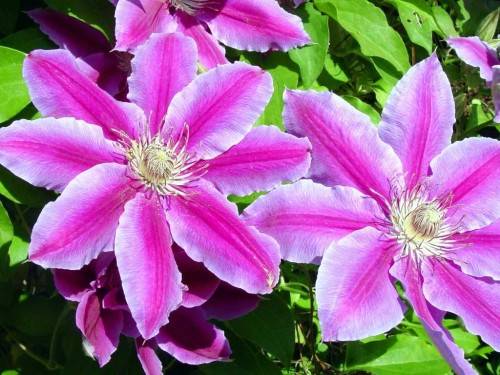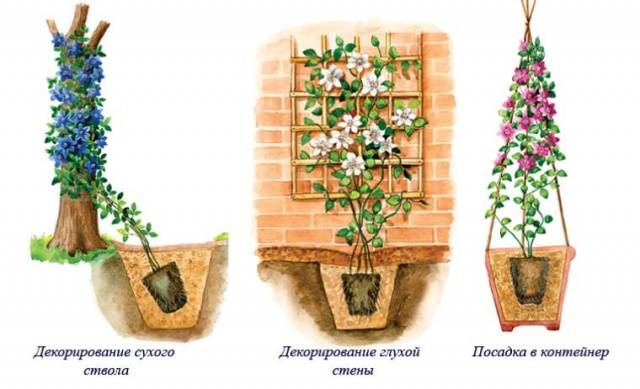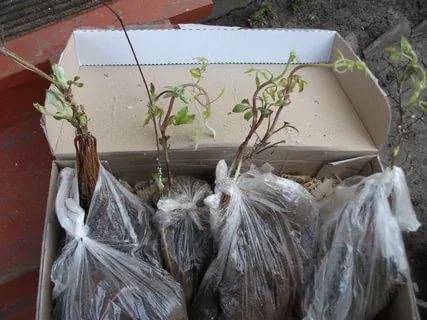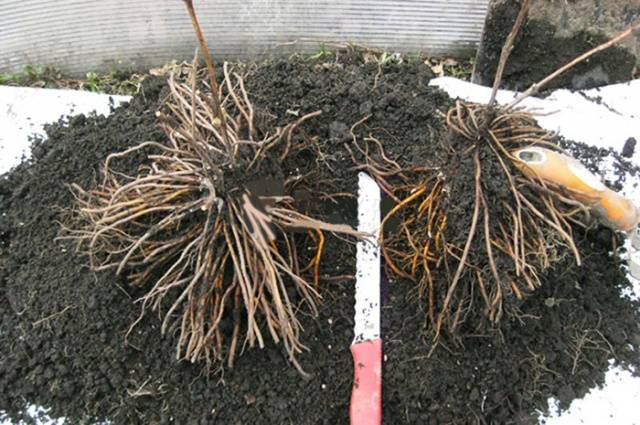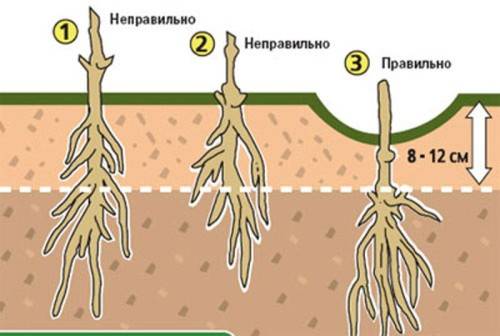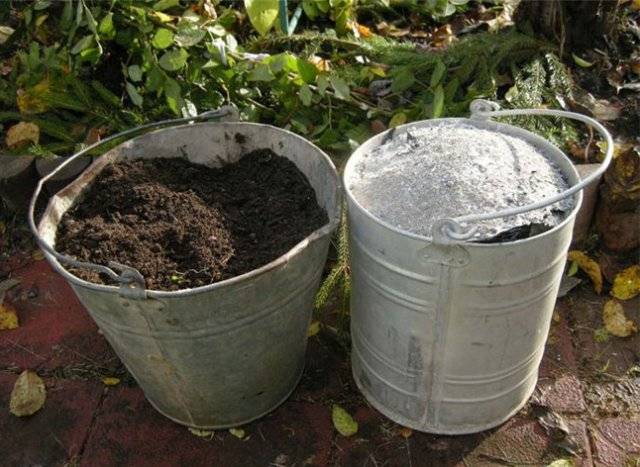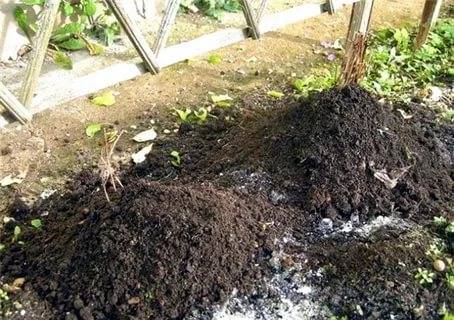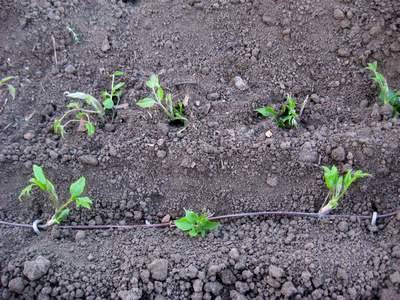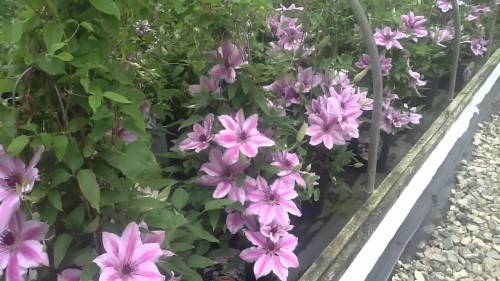Content
Clematis is considered the favorite plant of designers and private house owners. A beautiful curly flower is planted near the gazebo, fence, near the house, and even the entire courtyard is covered with an arch. The old French hybrid Nelly Moser is a worthy representative of the Patens group clematis, which has spread throughout the vastness of our homeland.
Description
In France, clematis was bred back in 1897. Liana grows more than 3.5 m in height. A distinctive feature of the hybrid is the intensive formation of shoots. On a bush for a season, they will grow up to 17 pieces. The gap between the nodes reaches 18 cm. Up to about 10 knots, the leaves on the vines shoot grow in a complex shape in the form of a tee up to 21 cm long. Above the stem, simple foliage with a maximum length of 11 cm is formed. The root is powerful, wide.
Buds appear on vine shoots of the past and current season. The shape resembles a pointed elongated egg. The length of the bud reaches 16 cm. The flowers bloom large, up to 18 cm in diameter. Under different weather conditions and care, the flower can grow small - up to 14 cm or large - up to 20 cm in diameter. The opened peduncle resembles a star. The flower consists of 6 or 8 petals in the shape of a pointed ellipse. Sepal length on average 10 cm. The inner surface of the petals is purple, the outer side is slightly pale. A pronounced red stripe with a purple tint separates the petal along. The length of the stamens is about 2 cm. The color is closer to white. Anthers are slightly reddish, sometimes purple.
Last year's creeper shoots throw out their buds earlier. The time of the first flowering falls on June. Young shoots of clematis begin to bloom in July. Occasionally, the formation of separate peduncles is observed before the onset of cold weather. Each vines shoot throws up to 10 buds.
Hybrid clematis is winter-hardy, rarely affected by fungi. In the middle liana, it is better to plant a vine from the south or east side against the wall of the building. In such conditions, even frost is not afraid of the flower. The hybrid is popular for landscaping. Liana is planted along with climbing roses. You can even grow clematis in a separate container.
In the video, a review of the hybrid form of Nelly Moser:
Landing
A beautifully blooming liana of a hybrid form can be obtained only if the elementary planting rules are observed.
Choosing a place and time for boarding
When planting several bushes of the Nelly Moser hybrid, it is necessary to maintain a minimum distance of 1 m. The optimal place is the area where the sun looks in in the morning, and a shadow appears at the lunchtime peak of the heat. For a warm region, it is optimal to choose the eastern side of the site.
Clematis roots are wide and grow almost on the surface. They need to create a shade, otherwise the root system will suffer from overheating in the sun, which will end with the death of the vine. The selected landing site should not be blown by strong winds. Vine shoots are very fragile. Gusts of wind will simply break them. Lowlands are not the best site for a vine. The accumulation of sediment and melt water will lead to root rot.
The planting time for clematis is chosen individually, depending on the climatic conditions of the region. In the northern regions and the central strip - this is the end of April - beginning of May. You can plant a seedling in September. For the southern regions, the beginning of October is considered the optimal time for planting clematis.
Selection of seedlings
You can choose a strong clematis hybrid seedling according to the following criteria:
- a developed root system consists of five branches with a length of at least 30 cm;
- roots of the same thickness without outgrowths;
- there are at least 2 developed buds on the stem.
If a vine seedling is caught weak, it is not advisable to plant it in open ground. It is better to grow such clematis in a container, a greenhouse, and transplant it outside the next season.
Soil requirements
The hybrid form of liana loves fertile soil saturated with humus. The root develops well in loose soil. If the site is not located on sandy loam or loamy soil, sand is added when planting a clematis seedling.
A young plant is planted in holes 60 cm deep and wide. Part of the hole is filled with a drainage layer 15 cm thick from a small stone. Pour a nutrient mixture prepared from the following components on top:
- humus - 2 buckets;
- peat - 2 buckets;
- under the condition of heavy soil, add sand - 1 bucket;
- ash - 500 g;
- mineral complex fertilizer for flowers - 200 g.
The prepared mixture is filled in the hole a month before the clematis seedling is planted. During this time, the soil will settle and be processed by earthworms.
How is landing
The seedling of the hybrid is planted so that the root collar is in the ground at a depth of 12 cm.Under such conditions, a strong bush will grow, and the roots will be protected to the maximum from frost and excess moisture. The process of planting a clematis seedling consists of the following steps:
- a part of the filled fertile mixture is selected from the prepared hole, trying on the size of the roots of the vine seedling;
- in the center of the bottom of the hole, a mound is formed from the ground;
- a clematis seedling is lowered into a hole along with a lump of earth, and if the plant was sold with open roots, then they are spread over a mound;
- the hole is poured abundantly with water at room temperature;
- Nelly Moser's clematis root is sprinkled with a thin layer of sand, and on top with a fertile mixture.
When planting a vine seedling in the center of the hole, it is advisable to install a peg for a plant garter. The plant covered with soil is watered again, and the soil in the hole is mulched with peat.
Care
The French hybrid requires standard care, which includes regular watering, feeding, pruning, mulching the soil.
Top dressing
The initial starting feeding of the Nelly Moser hybrid is performed with organic matter. An infusion is made from chicken manure or mullein. 1 liter of slurry is diluted in a bucket of water and poured under the root. The next top dressing of clematis is mineral. With the beginning of the formation of buds, 60 g of potassium and phosphorus fertilizers are applied. The last third top dressing of the liana is made at the end of flowering. Use the same proportions of potash and phosphate fertilizer.
Loosening and mulching
After each watering, the soil under the clematis bush is loosened to a shallow depth so as not to damage the roots. The soil around the stem of the vines is covered with mulch from peat or sawdust to prevent moisture evaporation, protect the roots from overheating in the sun.
Watering
If there is no drought, clematis is watered once a week. The hybrid does not need a large volume of water, since the roots grow from above. It is better to water the bush in the morning. During the day, the moisture will be absorbed, and the soil can be mulched in the evening.
Pruning
Nelly Moser's hybrid belongs to the second group of clematis pruning. For the winter, shoots are removed only up to half the growth of the bush. Vine pruning is carried out in two stages:
- at the end of the first wave of flowering at the clematis bush, the faded part of last year's shoots is cut off;
- after the second flowering, young faded shoots are cut off from the Nelly Moser hybrid bush.
The second pruning of hybrid clematis can be done in three ways:
- The growth point is removed. Pruning the bush promotes early flowering for the next season.
- Prune the shoot to the first full leaf. The method allows to achieve uniform flowering of the bush.
- The entire shoot is cut off. This action is resorted to, if necessary, to thin out the clematis bush.
After pruning the bush of the first stage, new shoots of the vines grow in about 1.5 months and form new flower buds.
Shelter for the winter
For wintering, clematis of the hybrid form Nelly Moser is prepared when the soil freezes to a depth of 5 cm. The root system of the vines is covered with peat, forming a mound. The lashes of clematis are rolled up in a ring, bent to the ground, covered with pine branches or agrofibre.
Disease and pest control
Nelly Moser's hybrid is susceptible to infection by the wilt fungus, which causes the bush to wilt. The infected plant is only removed, and the ground is disinfected with copper sulfate or copper oxychloride.
When gray rot appears, hybrid clematis is saved by spraying and watering with a solution of Fundazol. The fight against rust is carried out by treating clematis with a 2% solution of Bordeaux liquid.
Against powdery mildew, the Nelly Moser hybrid is sprayed with a solution of soda or 30 g of copper sulfate and 300 g of laundry soap are dissolved in a bucket of water.
Among the pests of clematis, Nelly Moser is harmed by ticks and aphids. Insecticides are used as a means of control.
Reproduction
If a bush of the Nelly Moser hybrid is already growing on the site, it can be propagated in three ways:
- Division of the bush. Liana is dug out of the ground at the age of 6. With a knife blade, the root of the bush is divided so that each seedling has buds on the root collar.
- From last year's lignified shoots. At the point of formation of the knot, the old shoot of the vines is pinned into a container with nutritious soil. The pot is preliminarily buried in the ground. When the shoot of the hybrid clematis grows, the soil is periodically poured with a mound. Already in the fall, a new vine seedling is transplanted to another place.
- From autumn layers. In October, the lianas remove the foliage from the whip of the bush to a strong bud. The shoot can be rolled up or laid flat in a prepared groove with peat. The layering is covered with fallen leaves from trees or hay. In the spring, abundant watering is performed. By the fall, a full-fledged clematis seedling grows from the cut.
The second and third methods are considered the most gentle propagation of hybrid vines. If the division of the bush is unsuccessful, clematis may die.
Application in landscape design
The easiest way to decorate your yard is to plant Nelly Moser's hybrid vine near the lilac or viburnum. Clematis is beautifully combined with conifers. Liana is planted to braid the gazebo, pillar, wall of the house, yard fence. An old, dried tree can serve as a support for the bush. The art of craftsmanship is the creation of an alpine slide. Clematis is allowed to wander among stones and other flowers.
Testimonials
Conclusion
A hybrid of French origin, Nelly Moser has long adapted to the conditions of our climate.Even a beginner can raise Clematis, you just need to make an effort and have a desire.
